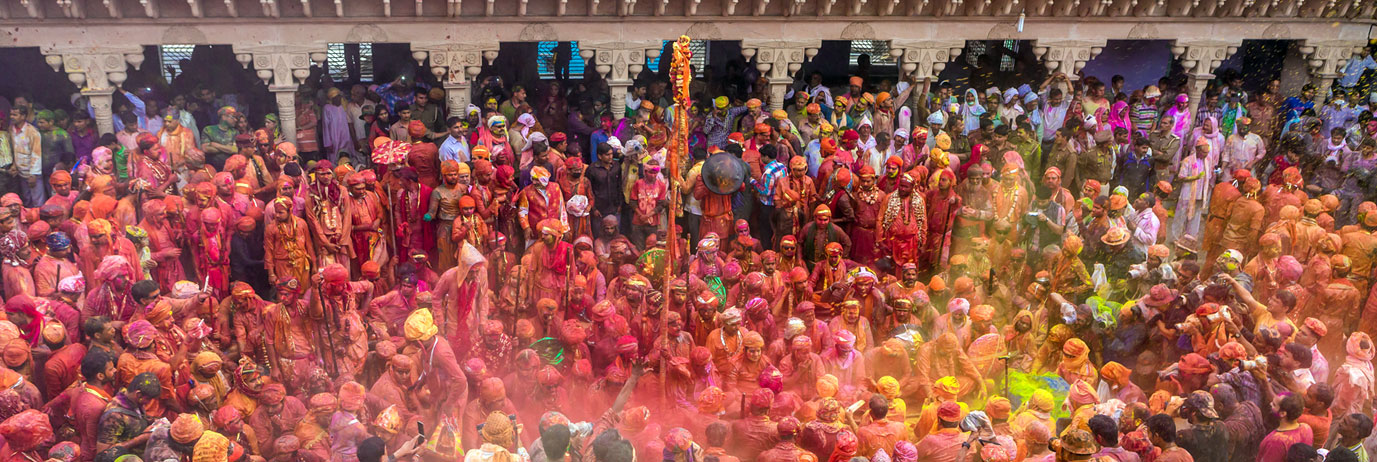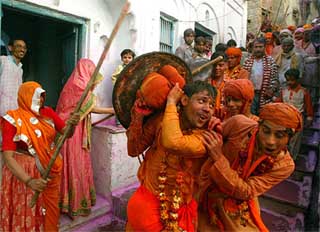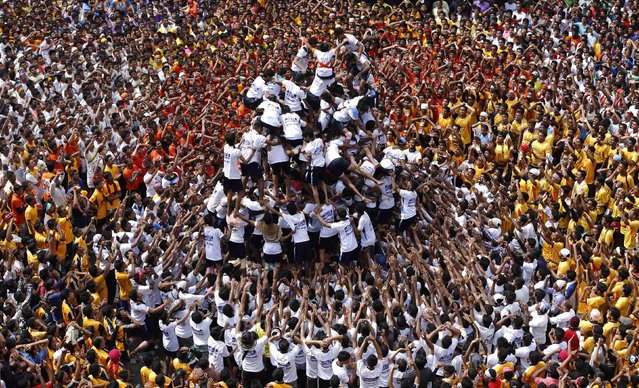Best Places To Celebrate Holi in India

Holi is one of the most famous color festivals in India which is celebrated by all together with great craze and happiness. Holi is celebrated in the month of “Phalguna” on the full moon day of the Hindu calendar. Holi is a colorful festival
During the Holi, custom plays like people will throw colors to others and will splash the colored water. People will dance with the beats of the drums and an amazing ambiance is created there without any doubt. So we are bringing you places where you can double your excitement of the Holi celebration.
Mathura and Vrindavan

This festival of colors brings in a week-long celebration for the people of Mathura and Vrindavan. Mathura, in the Braj region, is the birthplace of Lord Krishna. In Vrindavan this day is celebrated with special puja and the traditional custom of worshipping Lord Krishna; here the festival lasts for sixteen days.
As these places hold a strong bond with Lord Krishna, and Holi have its legends associated with Radha and Krishna and play pranks the young Krishna played with the cowgirls called gopis. In the Braj region of India, where the Hindu deity Krishna grew up, the festival is celebrated until Rangpanchmi in commemoration of the divine love of Radha for Krishna.
Dhulendi – Holi with drums (dholak), colors, etc. originated from the Braj region hundreds of millennia before today.
Barsana

Barsana, a town near Mathura in the Braj region of Uttar Pradesh, celebrates Lath mar Holi in the sprawling compound of the Radha Rani temple. Thousands gather to witness the Lath Mar Holi when women beat up men with sticks as those on the sidelines become hysterical, sing Holi songs, and shout “Sri Radhey” or “Sri Krishna“.
The Holi songs of Braj Mandal are sung in pure Braj, the local language. Holi celebrated at Barsana is unique in the sense that here women chase men away with sticks. Males also sing provocative songs in a bid to invite the attention of women. Women then go on the offensive and use long staves called lathis to beat the men, who protect themselves with shields.
Shantiniketan, West Bengal

In West Bengal, Holi is known by the name of “Dol Jatra”, “Dol Purnima” or the “Swing Festival”. The festival is celebrated in a dignified manner by placing the icons of Krishna and Radha on a picturesquely decorated palanquin which is then taken around the main streets of the city or the village. On the Dol Purnima day in the early morning, students dress up in saffron-colored or pure white clothes and wear garlands of fragrant flowers.
They sing and dance to the accompaniment of musical instruments, such as the ektara, dubri, and veena. The devotees take turns to swing them while women dance around the swing and sing devotional songs. During these activities, the men keep spraying colored water and colored powder, abir, at them.
In Shantiniketan, Holi has a special musical flavor. Visitors on Holi are offered traditional dishes that include malpoa, kheer sandesh, basanti sandesh (saffron), saffron milk, payash, and related foods.
Anandpur Sahib, Punjab

http://www.tribuneindia.com/2013/20130329/punjab.htm
Sikh celebrates Holi in its own unique way, it’s called Holla Mohalla. Mahalia is a Punjabi word that implies an organized procession in the form of an army column accompanied by war drums and standard-bearers, and proceeding to a given location or moving in state from one place to another, and Holi is when people playfully sprinkle colored powders, dry or mixed in water, on each other.
The fair held at Anandpur Sahib is traditionally a three-day event but participants attend Anandpur Sahib for a week, camping out and enjoying various displays of fighting prowess and bravery, and listening to kirtan, music, and poetry. For meals, which is an integral part of the Sikh institution (Gurdwara), visitors sit together in Pangats (Queues) and eat the vegetarian food of the Langars. The event concludes on the day of Hola Mohalla with a long, military-style procession near Takht Sri Keshgarh Sahib, one of the five seats of temporal authority of the Sikhs.
Udaipur and Jaipur, Rajasthan

Rajasthan has its own unique ways to celebrate the festival of colors Holi There is an Elephant Festival in Jaipur, and a grand Holika Dahan celebrated by the royal family of the Mewar dynasty.
Elephant Festival is a festival celebrated in Jaipur city in Rajasthan state in India. It is held on the day of the Holi festival. Rajasthan has a special meaning to Holi which attracts locals and tourists across the world to be a part of the celebration.
Breaking the Pot, Mumbai

Holi in Mumbai is celebrated with great enthusiasm, there are a lot of Holi parties arranged all over. There is an event of breaking of buttermilk pot by making a human pyramid, the group who is able to break the pot is crowned the winner, The event relates to acts of Krishna of breaking buttermilk pots.
This tradition is followed in many other parts of India, But in Mumbai, it becomes a spectacle event to see.
Shigmostav, Goa

Holi is a part of the Goan or Konkani spring festival known as Shigmostav which lasts for about a month. The color festival of Holi is a part of longer, more extensive spring festival celebrations.
Shigmo parades consisting of traditional folk and street dancers and elaborately built floats depicting scenes from regional mythology and religious scenes. Meanwhile, Shigmo festivals also continue in various rural parts of Goa, spanning over a fortnight, with different days earmarked for celebrations in different areas.
Yaoshang Festival, Manipur

Manipuris celebrate Holi for 6 days. Here, this holiday merges with the festival of Yaosang. Traditionally, the festival commences with the burning of a thatched hut of hay and twigs. Young children go from house to house to collect money, locally known as nakadeng (or nakatheng), as gifts in the first two days.
The youths at night perform a group folk dance called Thabal chongba on the full moon night of Lamta (Phalgun), traditionally accompanied by folk songs and rhythmic beats of the indigenous drum, but nowadays by modern bands and fluorescent lamps. In Krishna temples, devotees sing devotional songs, perform dances and celebrate with aber (gulal) wearing traditional white and yellow turbans. On the last day of the festival, large processions are taken out to the main Krishna temple near Imphal where several cultural activities are held.
Also Read: Holi Messages, Wishes, SMS, images, and Facebook Greetings






